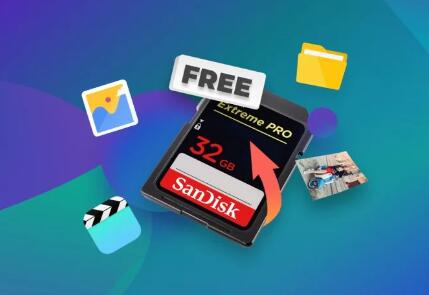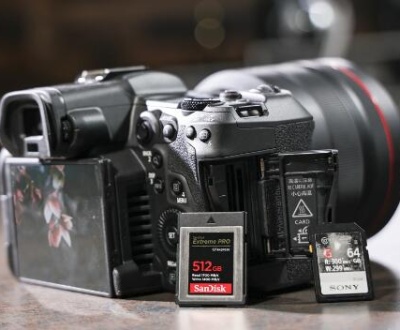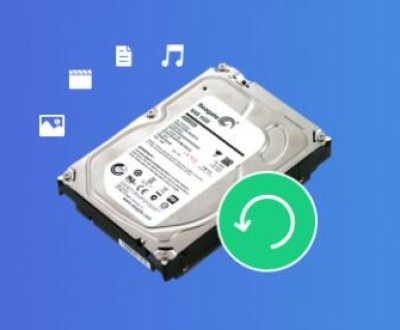SD cards are commonly used in cameras, smartphones, and various other devices to store photos, videos, and documents. Unfortunately, data loss can happen for many reasons accidental deletion, formatting, corruption, or card malfunction. Fortunately, several methods can help restore deleted items from an SD card.
Data Deletion
When you delete a file from an SD card, the operating system marks the space it occupied as available for new data. However, the actual data remains until it’s overwritten by new information. Therefore, quick action can increase the chances of successful recovery.
Methods for Recovering Deleted Items
Method 1: Check the Recycle Bin or Trash
If you have deleted files using a computer, the first step is to check the Recycle Bin (Windows) or Trash (Mac):
Open the Recycle Bin/Trash:
On Windows, double-click the Recycle Bin icon on your desktop.
On Mac, click the Trash icon in the dock.
Look for Your Files:
Browse through the items. If you find your deleted files, right-click on them and select “Restore” (Windows) or drag them out of the Trash (Mac).

Method 2: Use Data Recovery Software
Panda Assistant
Panda Assistant stands out in the crowded data recovery market thanks to its user-friendly interface and advanced recovery capabilities. The software supports a wide range of file types, including documents, photos, videos, and more. It can recover data from various storage devices, including SD cards, USB drives, and external hard drives, making it an ultimate tool for anyone facing data loss issues.
One of the standout features of Panda Assistant is its deep scan function. This feature delves deep into the storage device, searching for recoverable files that other software might miss. Users can preview files before recovery, ensuring they only restore what they truly need. This not only saves time but also provides peace of mind that the correct files are being retrieved.
Designed with both novice and advanced users in mind, Panda Assistant requires no technical expertise. The intuitive wizard guides users through the recovery process step-by-step, making it easy to navigate through the software’s functionalities. With just a few clicks, users can initiate a scan, review the results, and recover their lost data, making it accessible for everyone, regardless of their tech-savviness.
Method 3: Use a Command Prompt (Windows)
For more advanced users, the Command Prompt can be used to recover deleted files. Here’s how:
Connect the SD Card:
Insert your SD card into the computer.
Open Command Prompt:
Press Windows + R, type cmd, and hit Enter.
Use CHKDSK Command:
Type chkdsk X: /f (replace “X” with the letter of your SD card).
Press Enter. This command checks for errors on the card and may recover lost files.
Method 4: Restore from Backup
If you regularly back up your data, restoring from a backup may be the simplest solution:
Check Your Backup Service:
If you use cloud services like Google Drive, Dropbox, or iCloud, check these platforms for saved files.
Restore Files:
Follow the service’s instructions to restore files to your SD card.
Method 5: Seek Professional Data Recovery Services
If the above methods do not work, or if the data is critical, consider professional data recovery services. These services can be expensive, but they often have a higher success rate for retrieving lost data, especially in cases of physical damage or severe corruption.
Tips for Successful Data Recovery
Stop Using the SD Card: Once you realize data is missing, stop using the SD card immediately to prevent overwriting the deleted files.
Use Reliable Software: Choose reputable recovery software to avoid additional issues or data loss.
Backup Regularly: To prevent future data loss, make regular backups of your files on your SD card to another storage solution.
Check Card Health: Regularly check the health of your SD card using diagnostic tools to avoid potential failures.
Troubleshooting Common Issues
SD Card Not Recognized:
Check the card reader and USB port.
Try a different computer to see if it recognizes the card.
Corrupted Files:
Use data recovery software to scan for corrupted files and attempt recovery.
Slow Recovery Process:
Ensure you have sufficient storage space on your computer for the recovered files.
About us and this blog
Panda Assistant is built on the latest data recovery algorithms, ensuring that no file is too damaged, too lost, or too corrupted to be recovered.
Request a free quote
We believe that data recovery shouldn’t be a daunting task. That’s why we’ve designed Panda Assistant to be as easy to use as it is powerful. With a few clicks, you can initiate a scan, preview recoverable files, and restore your data all within a matter of minutes.
Subscribe to our newsletter!
More from our blog
See all postsRecent Posts
- How to save tiktok videos on computer 2025-04-30
- How to watch gopro videos on computer 2025-04-30
- How to save video from blink video doorbell to computer? 2025-04-30

 Try lt Free
Try lt Free Recovery success rate of up to
Recovery success rate of up to









